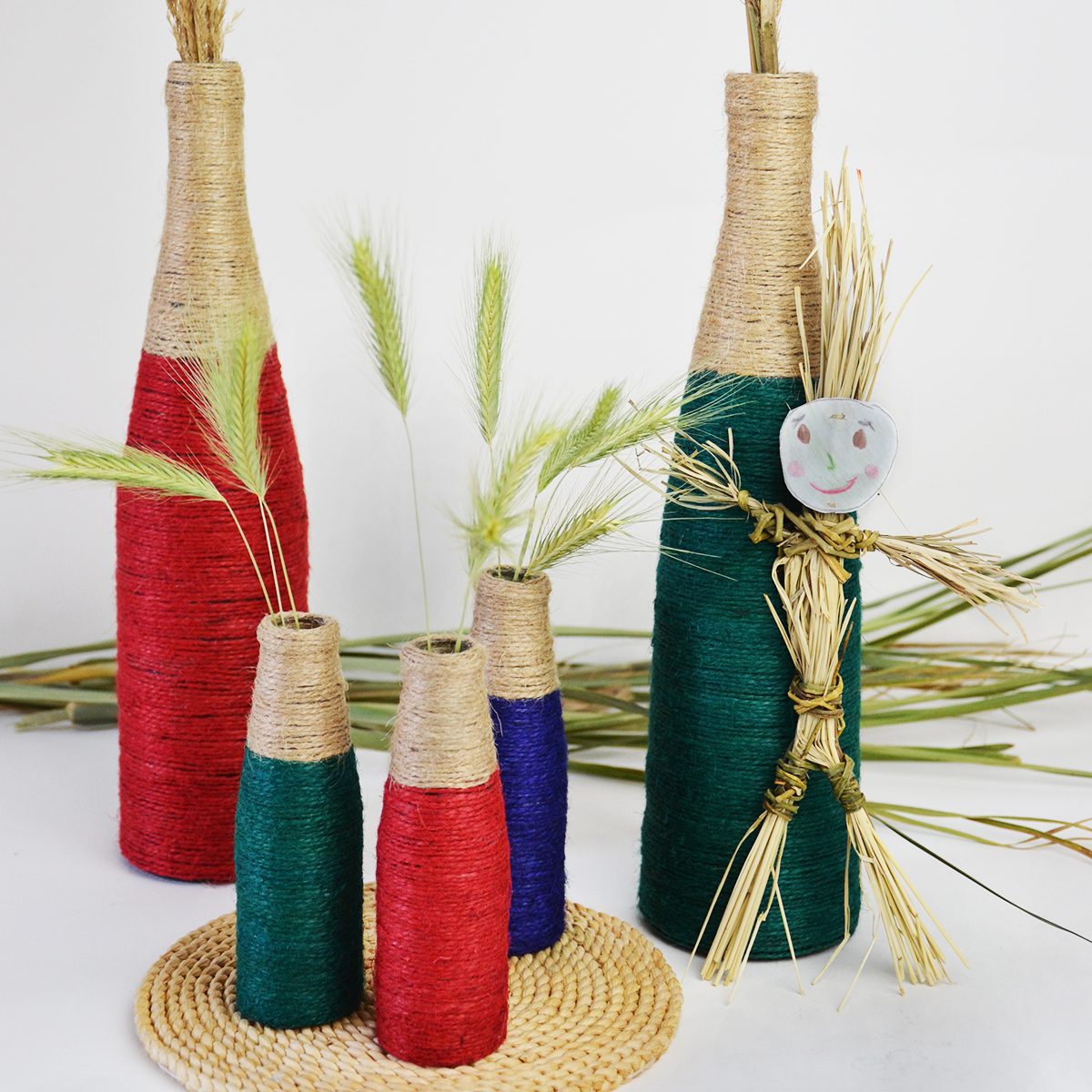Embarking on a craft project that involves gluing twine to glass can be an exciting and creative endeavor. Whether you’re aiming to add a rustic charm to vases, candle holders, or creating a unique piece of home decor, the process requires precision and the right materials. This blog post will guide you through the steps and provide insights into selecting the right adhesive to ensure your project’s success.
Choosing the Best Adhesive for Glass Projects
Finding the perfect adhesive is crucial for a long-lasting and aesthetically pleasing result. Not all glues are suitable for all materials, so it’s important to know which one to pick for your specific project.
Best Glue for Glass
The best glue for glass is one that dries clear, has a strong bond, and can withstand environmental changes. Epoxy or polyurethane adhesives are often recommended for their strength and clarity.
Best Adhesive for Glass to Glass
When it comes to the best adhesive for glass to glass, a silicone-based adhesive or a specialized glass glue, which is waterproof and heat-resistant, should be your go-to option.
Best Glass to Metal Glue
If your project involves attaching glass to metal, the best glass to metal glue would be a two-part epoxy or a super glue designed for both surfaces. These ensure a durable bond that can handle different coefficients of thermal expansion.
Best Clear Glue for Glass
For projects that require an invisible bond, the best clear glue for glass is often a UV-resistant and non-yellowing product like a clear silicone adhesive or specialized glass glues.
Best Glue for Glass Repair
In cases of repair, the best glue for glass repair would ideally be a one that sets quickly, dries clear, and forms a bond stronger than the glass itself. Cyanoacrylates are often used for their quick-setting properties.
Best Glass on Glass Glue
For layering glass on glass, the best glass on glass glue should be one that offers a strong bond without being too rigid, as glass can expand and contract. UV-curing adhesives are often used in these scenarios.
Preparation: Materials and Tools Required
Gathering the right supplies before starting your project will make the process smoother and more enjoyable.
Glue Twine to Glass Essentials
- Select a suitable adhesive from the options discussed above.
- Prepare your glass surface and twine.
- Have cleaning materials ready for any spills or excess glue.
Attaching Glass to Wood Supplies
When attaching glass to wood, you’ll need an adhesive that can bond to both porous and non-porous surfaces. Polyurethane or epoxy glues are often recommended for such tasks.
Best Glue for Glass to Fabric
For adhering glass to fabric, the best glue for glass to fabric should be flexible yet strong, like a fabric glue that dries clear or a light epoxy that won’t seep through the fabric.
Step-by-Step Guide to Applying Twine to Glass
Now that you have your materials ready, let’s move on to the application process.
Step 1: Surface Preparation
Begin with a clean glass surface. Remove any labels, dirt, or grease with alcohol or a glass cleaner. Ensure the surface is dry before proceeding.
Step 2: Applying the Adhesive
Apply a thin layer of your chosen adhesive to the glass where you want to start wrapping the twine. Work in small sections to prevent the glue from drying too quickly.
Step 3: Wrapping Twine Around Glass
Press the end of the twine onto the glue and start wrapping tightly around the glass. Keep tension on the twine for a uniform wrap and add more adhesive as you go along.
Step 4: Setting and Curing Time
Once the twine is in place, allow the adhesive to set. Check the manufacturer’s instructions for the curing time, which can vary depending on the glue used.
Step 5: Finishing Touches and Cleanup
Trim any excess twine and clean up any adhesive residues with a solvent suitable for your glue. Allow your project to cure for the recommended time before handling.
Creative Ideas and Inspirations
With your twine-wrapped glass project complete, you might be looking for ways to showcase your work or for further project ideas.
Decorative Applications
Consider using your twine-wrapped glass as a vase, candle holder, or a simple but elegant centerpiece. The texture of the twine adds a natural, cozy feel to any setting.
Functional Uses
Beyond decoration, these pieces can serve practical purposes, like organizing brushes or pens, or even as a unique drinking glass cover for outdoor gatherings.
Troubleshooting and Tips for Best Results
If you encounter issues with adhesion, ensure the glass is clean and the correct adhesive is used. For better wrapping, apply the glue in sections and keep the twine taut.
If you’re looking to embark on a DIY project that involves adhering materials to glass, you’ve come to the right place. In our comprehensive guides, we explore various adhesives and methods to ensure a secure bond. After mastering how to glue twine to glass, you might also be interested in learning how to make hot glue stick to glass. For those working with different materials, our tutorials on how to glue rubber to glass and how to glue plastic to glass provide valuable insights to successfully complete your crafting goals.
Conclusion: Displaying Your Twine Wrapped Glass
Once your project is complete, find the perfect spot to display your twine-wrapped glass item. It’s sure to add a touch of handcrafted beauty to any space it adorns.
